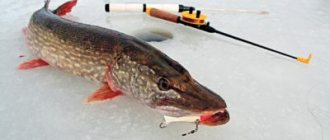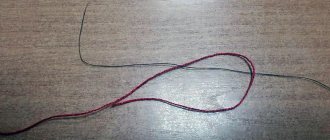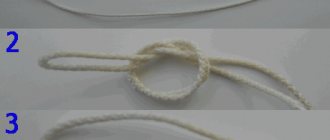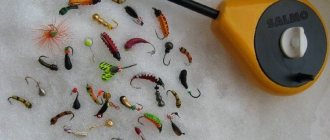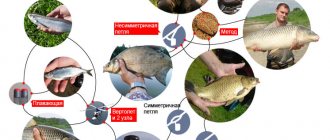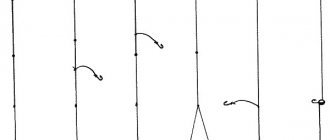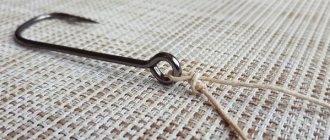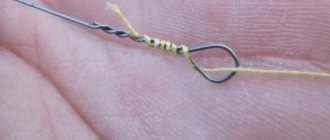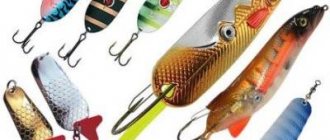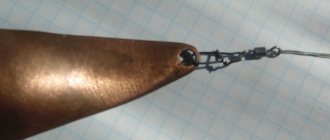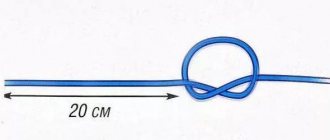Should I buy a ready-made fishing rod or assemble it myself?
When a person decides to try his hand at fishing, he still doesn’t really know anything and is faced with many questions, one of which is the question of purchasing a ready-made fishing rod or buying a complete set for it, from which the tackle can be assembled with your own hands.
Both options are good, and both have a right to exist. A ready-made fishing rod is the best option for those who do not want to waste time on details and want to get quick results. Of course, those who wish to become familiar with the art of fishing and the use of gear can purchase the necessary parts and make a fishing rod themselves.
So, step by step we put the twister on the offset hook:
Step 1 : pierce the twister from the end. We insert it inward and bend it at a right angle (marked with a red line).
Why do we make such a bend? We simply follow the (Z-shape) curve of the front segment of the offset hook shank.
It turns out like this:
Step 2 : We stretch the twister to the shank of the hook, repeating the Z-shaped bend and pull it towards the “eye”
Step 3. Trying the twister on the hook (actually this should have been done in advance)
We need to understand where it is better to pierce the body of the twister.
The red line indicates the intended puncture site.
BUT! Rubber can be hard or soft.
And by changing the puncture location, we can tighten or loosen the installation of the twister on the offset hook.
It is important!
If the rubber is hard, and if you pull it too hard, it will be difficult for the fish to push through the rubber.
And if the rubber is soft, and you put it on without tension, then any touch of the snag threatens to snag.
=
Step 4 We pierce the twister.
BUT! We pierce perpendicular to the body of the twister (the direction of the puncture is shown in red)
Why? Just look at how the twister is positioned later and you will understand...
Well, the twister itself is mounted on an offset hook. It's very simple, isn't it?
We check the quality of the offset press installation:
— when running your finger along the body of the twister, it should not catch
— when you apply slight pressure on the body of the twister, it should bend.
Installation errors:
Sticking a hook into the body of the twister is not worth it!
When biting, the twister is pressed. And it should be pressed through, releasing the offset hook tip.
And if you stick the point of a hook into the body of a twister, will the hook be able to pierce rubber and fish? Is not a fact…
Well, if you want the sting to be hidden in the body of the bait, then you can cut a small groove in the rubber body for the hook.
I don't really like this solution, but many people do it.
By the way, there are also factory-made silicone baits with grooves on the back :
On the subject of piercing, some fishermen make a “non-hook” from a jig head . Like this:
In my opinion, this is complete bullshit.
If the sting is hidden in the body, it will be difficult to detect fish. If the sting sticks out, then it’s not unhooked at all...
And here’s another – the classic shape of offset hooks . But I absolutely don't like:
Or maybe I don’t understand something... but for proper installation, the body of the bait must be very high.
But if it is high, then its lower part will lie on the hook. So?
Then, when biting, where will the rubber be pressed?
In general, I don’t use it and don’t recommend it.
Should I bend the offset hook or not?
If the silicone bait does not want to be beautifully mounted on the offset hook, then you can bend the offset hook itself (point the tip slightly downwards)
This does not add strength to the offset machine, so I did not advise you to do this
